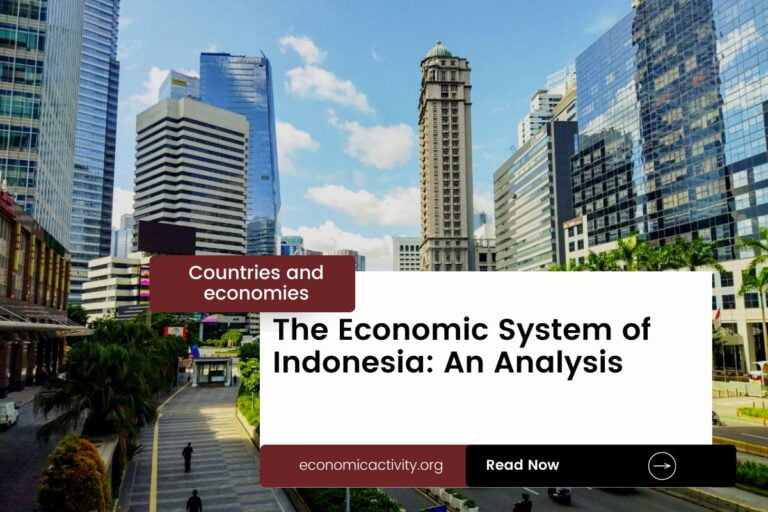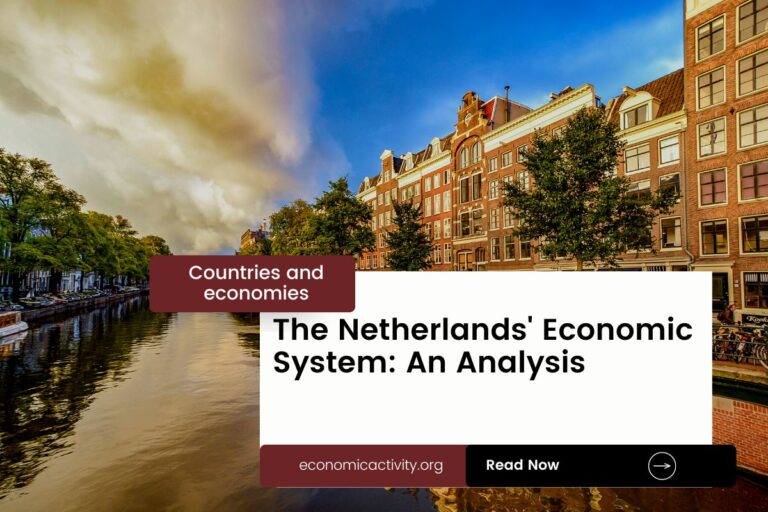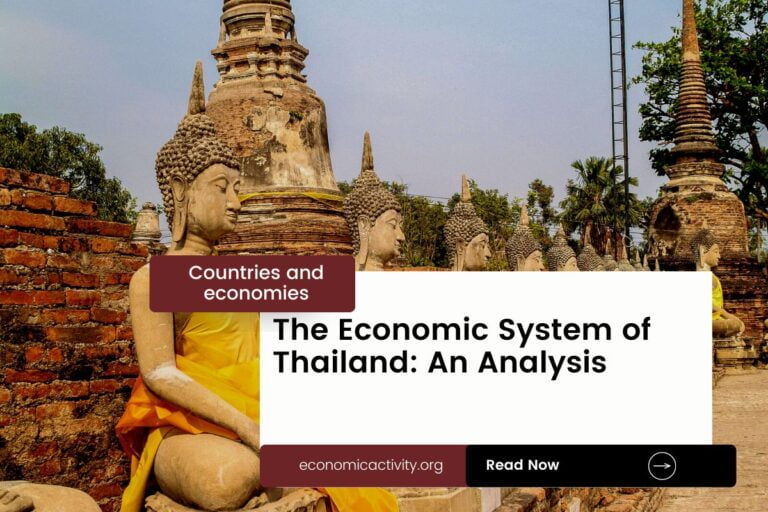Oman, with a population of 4,576,298, is ranked 121st in the world, just behind Mauritania. Located in the Middle East, it spans 309,500 square kilometers, ranking 69th globally, just behind Poland.
Oman’s economic position in 2022 is notable, with a GDP of $114.67 billion USD, ranking 61st globally. It follows Ecuador, which has a GDP of $115.05 billion USD. Oman’s GDP per capita is $25,056.79 USD, placing it 44th worldwide.
It is surpassed by Lithuania, with a GDP per capita of $25,064.81 USD. Oman’s economy shows stability and growth potential, positioning it as a significant player in the global market.
What are the economic activities of Oman?
- Primary activities: 1.8% of GDP.
- Secondary activities: 46.4% of GDP.
- Tertiary activities: 51.8% of GDP.

Primary Sector of Oman
The primary sector in Oman, particularly its agricultural activities, thrives due to the country’s diverse climate and natural resources. With 4.74% of the land dedicated to agriculture, Oman produces a variety of crops and animal products. The main agricultural products include dates, tomatoes, milk, sorghum, vegetables, goat milk, cucumbers/gherkins, chilies/peppers, watermelons, and cantaloupes/melons.
Despite contributing only 1.8% to the GDP, agriculture plays a crucial role in providing food security and employment opportunities. The abundance and variety of crops and animal products highlight the significance of the agricultural sector in Oman’s economy.
With a diverse geological landscape, the primary sector thrives on abundant natural resources like petroleum, copper, asbestos, marble, limestone, chromium, gypsum, and natural gas, driving the economy through exports and industrial development.
Oman’s oil production of around 970,816 barrels per day secures its position as the 10th largest producer globally. With reserves of 5.3 billion barrels, accounting for 0.32% of the world’s total, the country plays a significant role in the global oil market.
Oman’s natural gas production in 2020 reached 29,930 million m³, solidifying its position as the 25th largest producer globally. This significant output contributes to the country’s economic growth and industrial development, further establishing its presence in the global energy market.
Secondary Sector of Oman
What is the secondary sector or what are secondary activities?
The secondary sector comprises industries that transform raw materials from primary activities into finished products for consumption. In Oman, the main industrial products include crude oil production and refining, natural gas production, construction, cement, copper, steel, chemicals, and optic fiber manufacturing.
Manufactures in Oman’s total exports accounted for 16.43% in 2023, indicating a moderate contribution to the economy. Other sectors likely play a more significant role in driving the country’s export revenue.
Tertiary sector of Oman
What is the tertiary sector or what are tertiary activities?
The tertiary sector in Oman encompasses services that involve offering knowledge and time to enhance productivity and meet needs. Key activities include healthcare, education, banking, communication, tourism, transportation, and security services. These sectors contribute significantly to Oman’s economy by providing essential services and fostering economic growth.
Specifically, Tourism plays a crucial role in Oman’s economy, contributing significantly to its GDP. With over 3.5 million annual arrivals, the country boasts popular destinations like the ancient city of Nizwa and the stunning Wahiba Sands. The tourism industry accounts for a substantial portion of Oman’s economic activities, showcasing its rich cultural heritage and natural beauty.
Another example of tertiary economic activity is the mobile cellular sector, with approximately 6.75 million subscriptions, supporting technological growth. With 135 subscriptions per 100 inhabitants, it fosters connectivity and innovation.
Military Activities and Economic Sectors of Oman
The military is a great example of many economic activities working together. In Oman, the primary sector helps by providing resources needed for military use. The secondary sector is important too, as it manufactures military equipment. The tertiary sector includes the services the military offers, while the quaternary sector focuses on research and development. Finally, the quinary sector involves high-level decision-making and strategy in the military.
In 2023, Oman’s military expenditure was $5,851.8 million, which is 5.16% of the country’s GDP. The active military force consists of 42,600 personnel, resulting in about 13.5 active military members for every 1,000 people in the country.
Biggest company in Oman
Which is the biggest company in Oman? It’s Meridian Energy, valued at approximately 7.13 billion USD. This company operates in the energy industry, focusing on primary sector activities. Meridian Energy was founded in 1999 and plays a key role in Oman’s energy landscape.
International Trade of Oman
Import Activities of Oman

Oman’s import activities are of high importance, with imports totaling $40.4 billion, accounting for 35.23% of its GDP in 2023.
Oman’s key import activities include refined petroleum, cars, iron ore, milk, and iron pipes. Its top import partners are the UAE (27%), Saudi Arabia (11%), India (10%), China (9%), and Qatar (5%).
Exports Activities of Oman

Oman’s export activities are of high importance, constituting 66.63% of its GDP in 2023, totaling $76.4 billion. This showcases a strong reliance on exports for economic growth and stability.
Oman’s export activities are dominated by the export of crude petroleum, natural gas, refined petroleum, fertilizers, and semi-finished iron. The country’s top export partners include China (40%), India (11%), South Korea (6%), UAE (4%), and the US (4%).
Oman economy challenges in 2024
In 2024, Oman faces economic challenges due to growing government debt and reliance on oil. The country aims to diversify its economy and increase female labor force participation. Maintaining its high-income status and welfare system while managing debt remains a priority.




Leave a Reply